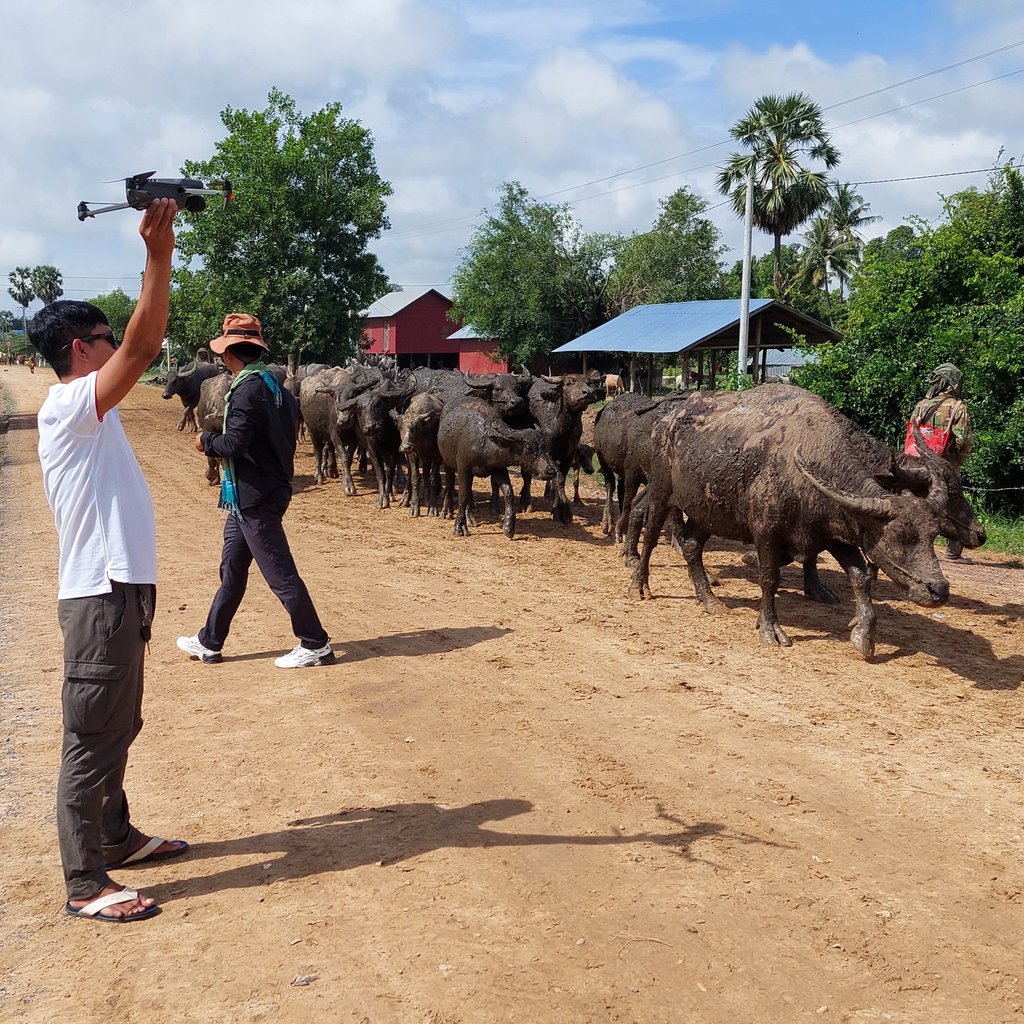Climate-resilient integrated farming systems at the interface of research, education, and practice (CRIFS)
What do we see on the project photo?
The photo shows a Cambodian researcher holding a drone to assess the farming landscape in Pursat province (Cambodia) dominated by rice farming and buffalo raising. Through the drone pictures the farming landscape can be looked at from a bird’s eye perspective. This helps for example to detect degraded areas.
How would you explain to a child what the project is doing?
The project brings together experts from Switzerland, Cambodia, and Lao PDR to develop better ways for growing food. Studying farming systems will help farmers prevent land degradation and to deal with problems like floods/droughts and pests worsened by climate change. This will make their farms more resilient to climate change.
What is the project’s main objective?
The main objective is to develop climate-resilient integrated farming systems (IFS) in Cambodia and Lao PDR, develop recommendations to scale them up at provincial and national level, and integrate this knowledge into higher education curricula and training for agricultural stakeholders.
Why is the project important?
Small-scale farms make an important contribution to food production, ecosystem health, and rural livelihoods. It is hence important that these farms are managed in a sustainable way to provide healthy natural resources for the current and next generation of farmers.
What has been the most positive moment during the project?
Reading the farming systems by using a drone has been very exciting. Together with the project partners, new insights could be gained on the location of different farm types in the landscape, and what it means for their climate change vulnerability. Furthermore, collaborative work during a field visit has been very enriching.
What have been the biggest challenges encountered in the project?
Gathering and synthesizing existing information on the many different earlier rural development projects and their impacts as well as from available scientific studies has been challenging. However, it is worth to do so in order to guarantee learning on past interventions.
What is the most important lesson learned from the project?
It is crucial to understand the landscapes in which farms are located and to make this knowledge available to local authorities and stakeholders. For example, whether you have access to groundwater or not makes a big difference to farm development. Bringing together expertise from three countries has proven very valuable in assessing the landscapes.
About the project
Title:
Climate-resilient integrated farming systems at the interface of research, education, and practice (CRIFS)
Contact:
Dr. Isabelle Providoli, Senior Research Scientist, Centre for Development and Environment (CDE), University of Bern
Duration:
3 years
Funding institutions:
Southeast Asia-Europe Joint Funding Scheme for Research and Innovation
Implementing institution:
Centre for Development and Environment (CDE), University of Bern, Switzerland
Royal University of Agriculture, RUA, Cambodia
National Agriculture and Forestry Research Institute (NAFRI) of Lao PDR
National University of Laos (NUOL), Lao PDR
Links to further information:
CRIFS project webpage

